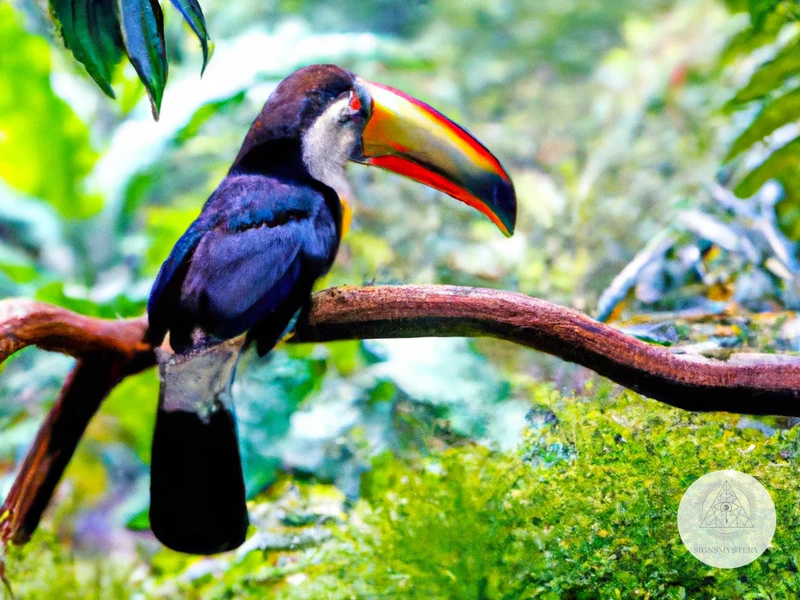Nature is a magnificent tapestry of interconnectedness, where every living being plays a vital role. In this elaborate web of fauna and flora, animals hold a special place as powerful symbols of spiritual wisdom and teachings. The manifold layers of symbolism attributed to animals across cultures and ancient beliefs provide us with invaluable insights into our own lives and the world around us. From the mighty eagle that embodies spirituality and freedom to the graceful peacock that represents beauty and confidence, the symbolism of animals in nature is a profound subject that invites us to delve deeper into the wonders of the natural world and discover the spiritual teachings they offer. Join us on a journey to explore the significance of animal symbolism, interpret their messages, and unlock the transformative power they hold.
The Significance of Animal Symbolism
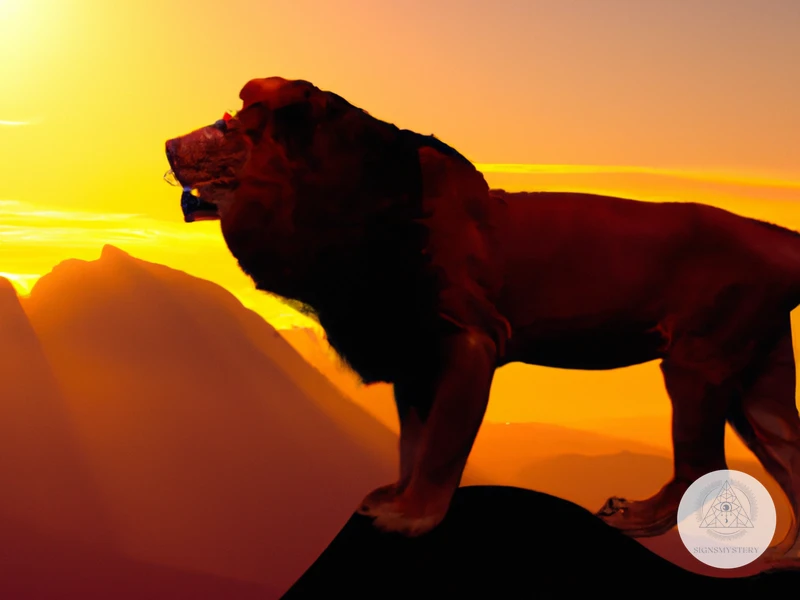
Throughout history, animals have held a deep-rooted significance in various cultural and spiritual beliefs, giving rise to the fascinating realm of animal symbolism. These symbolic associations can be traced back to ancient civilizations, where animals were revered as sacred beings and believed to possess divine qualities. In ancient Egypt, for example, the cat was considered a symbol of protection and fertility. Native American tribes also attributed spiritual meanings to animals, using them as messengers or guides in their spiritual practices. The Mayans, known for their advanced civilization, associated animals with specific traits and qualities, believing that they could embody the essence of these animals within themselves. These diverse cultural beliefs demonstrate the profound impact that animals have on our spiritual and symbolic understanding of the world. Hence, exploring the significance of animal symbolism not only provides a window into ancient wisdom but also offers valuable insights for personal growth and self-discovery. Whether it’s delving into the Aboriginal concept of totems and their symbolism or connecting with the strength and perseverance represented by the elephant spirit animal, the significance of animal symbolism is a rich and captivating subject to explore.
1. Ancient Cultural Beliefs
Ancient cultural beliefs have long recognized the profound symbolism associated with animals. In civilizations such as ancient Egypt, Greece, and Mesopotamia, animals were considered sacred and believed to possess divine qualities. They were seen as intermediaries between the human realm and the divine realm, acting as messengers and guides. For example, the Egyptians revered the hawk as a symbol of royalty and divine protection, while the Greeks associated the owl with wisdom and the ability to see through darkness. In Native American cultures, animals played a central role in spiritual practices, with each animal representing specific qualities and teachings. The concept of animal totems, which are animals believed to be connected to individuals and provide guidance, is still revered in many indigenous communities today. In order to better understand the symbolism behind animals in ancient cultural beliefs, it is essential to explore the spiritual and mythological narratives surrounding these animals. By doing so, we can gain valuable insights into the ancestral wisdom and teachings that have been passed down through generations. For a more in-depth exploration of the Aboriginal totems and their symbolism, you can refer to the article “Exploring Aboriginal Totems and Symbolism”.
2. Native American Spirituality
Native American spirituality is deeply intertwined with nature and the animal kingdom. For Native Americans, animals are viewed as sacred and revered teachers, embodying spiritual qualities that guide and inspire. Each tribe has its own unique set of animal symbols and meanings, passed down through generations. The Lakota Sioux, for example, consider the buffalo as a symbol of abundance, strength, and sacredness. They believe that the buffalo represents the interconnectedness of all living beings and teaches them the importance of respecting and honoring the natural world. Similarly, the Navajo people hold the bear in high regard, symbolizing courage, power, and protection. They believe that the bear is a spiritual guide who can provide strength and guidance in times of need. Animal dances and rituals are an integral part of Native American ceremonies, connecting individuals to their animal spirit guides and seeking their wisdom and guidance. The intricate relationship between Native Americans and animals reveals a profound understanding of the interconnectedness of all life forms and the importance of living in harmony with nature. Exploring the intricacies of Native American spirituality and their deeply symbolic connection to animals can offer us a renewed appreciation for the wisdom and teachings of the natural world, guiding us towards a more reverent and harmonious existence. To gain further insight into the spiritual significance of animals, including the revered role of the elephant as a spirit animal or the profound symbolism found within the Mayan civilization, you can explore additional resources.
3. Animal Guides and Totems
Animal guides and totems are a significant aspect of animal symbolism, offering spiritual guidance and personal insight. Animal guides are spiritual beings that take the form of animals to impart wisdom and support on our life journey. These guides may appear in dreams, visions, or through encounters in the physical world. Each animal guide carries its unique symbolism and teachings, reflecting qualities and characteristics that align with our own spiritual path. Totems, on the other hand, are revered animals within specific cultures or tribes that serve as a symbol of spiritual protection and guidance. These totem animals are believed to have a deep connection with the collective energy of the tribe or community, and their presence is seen as a sign of strength and unity.
When it comes to working with animal guides and totems, it is essential to develop a deep understanding and reverence for these beings. This involves engaging in practices such as meditation, dream journaling, or simply spending time in nature to foster a deeper connection with the animal kingdom. By observing the behavior and traits of animals, we can gain valuable insights into their symbolic meanings and apply them to our own lives.
For instance, if we encounter the majestic elephant as our animal guide, we are drawn towards qualities of strength, wisdom, and perseverance. The elephant encourages us to face challenges head-on, reminding us that we have the inner power to overcome obstacles and navigate through difficult times. By seeking guidance from the elephant spirit animal, we can learn to embody its steadfast and resilient nature.
In the rich tapestry of animal symbolism, the Mayans also valued animal guides and totems. They believed that each person had their own animal counterpart, known as a Nahual, which served as a protector and guide throughout life. This deep connection between humans and animals was seen as a way to tap into the ancient wisdom and spiritual energies that animals possess.
Whether we actively seek out our animal guides or receive their messages intuitively, working with these spiritual beings can deepen our understanding of ourselves and the world around us. They offer us profound guidance and support as we navigate our spiritual paths and seek a deeper connection with the divine. Ultimately, the teachings of animal guides and totems remind us that we are not alone on this journey and that the wisdom of the animal kingdom is readily available to those who are open to receiving it.
Interpreting Animal Symbolism
Interpreting animal symbolism involves uncovering the deeper meanings and messages that animals convey through their traits, behaviors, and cultural associations. One approach is to examine the specific traits and characteristics attributed to each animal. For instance, the eagle is often associated with spirituality and freedom due to its ability to soar to great heights and its sharp vision. Another way to interpret animal symbolism is by exploring the universal symbolic meanings that exist across different cultures and spiritual traditions. For example, the owl is commonly associated with wisdom and intuition in various societies. These universal symbolic meanings help us understand the broader significance of animals in our lives. Additionally, personal interpretations play a crucial role in understanding animal symbolism, as our individual experiences, beliefs, and connections with particular animals can add unique layers of meaning. By deepening our understanding of animal symbolism and its multifaceted interpretations, we can gain profound insights into ourselves, the natural world, and the spiritual teachings that animals impart. (Link: /elephant-spirit-animal/)
1. Animal Traits and Characteristics
Animal traits and characteristics play a significant role in understanding animal symbolism. Each species has its own distinct characteristics and behaviors that carry symbolic meaning. By observing and reflecting on these traits, we can gain insights into deeper aspects of ourselves and our connection to the natural world.
For example, the regal lion is often associated with strength, courage, and leadership. Its majestic presence and powerful roar symbolize personal power and authority. The lion’s characteristics can inspire us to tap into our own inner strength and face challenges with bravery and confidence.
The graceful and elusive deer, on the other hand, embodies qualities such as gentleness, intuition, and sensitivity. The deer’s ability to move swiftly and gracefully through the forest speaks to its ability to navigate life’s challenges with grace and adaptability. By observing the deer’s behavior, we can learn to trust our intuition and embrace our sensitivities.
The wise owl, known for its keen observation and nocturnal nature, represents wisdom and intuition. Its ability to see in the dark signifies the importance of looking beyond superficial appearances and accessing deeper truths. The owl teaches us to trust our inner wisdom and embrace our intuitive gifts.
By studying the traits and characteristics of different animals, we can gain a deeper appreciation for the symbolism they hold. Whether it’s exploring the Mayan civilization’s connection to spirit animals or delving into the wisdom of animal symbolism in different cultures and traditions, understanding animal traits and characteristics allows us to interpret their messages more effectively. It provides a foundation for exploring the rich tapestry of animal symbolism and its relevance to our own lives.
2. Universal Symbolic Meanings
Universal symbolic meanings attributed to animals transcend cultural boundaries and are recognized across different traditions and belief systems. These symbolic meanings draw upon the inherent characteristics and behaviors of animals, which resonate with the human experience on a profound level. For example, the lion is often associated with courage and strength, symbolizing leadership and assertiveness. Similarly, the turtle embodies wisdom, patience, and longevity, representing the importance of taking life at a steady pace. The snake, with its ability to shed its skin and undergo transformation, is seen as a symbol of rebirth and healing. The butterfly, seen in various cultures, represents transformation, change, and spiritual growth. The owl is commonly linked to wisdom and intuition, as it possesses keen senses and the ability to navigate through darkness. These universal symbolic meanings reflect qualities and virtues that humans aspire to cultivate within themselves. Exploring the symbolism behind these animals allows us to tap into a collective understanding of their significance and gain deeper insights into the human experience. To learn more about the symbolic meanings attributed to animals by the ancient Mayan civilization, you can explore our article on Spirit Animals in the Mayan Civilization.
3. Personal Interpretations
Personal interpretations of animal symbolism add a unique and subjective layer to the already vast spectrum of meanings attributed to various animals. While there are common symbolic associations that are widely accepted, such as the owl representing wisdom or the butterfly symbolizing transformation, personal interpretations allow individuals to connect with animals on a deeply personal and individual level. These interpretations can stem from personal experiences, dreams, or simply a deep resonance and affinity towards a particular animal. For example, someone may find solace and guidance in the gentle nature of a deer, associating it with a sense of peace and harmony. Another person may interpret the powerful and majestic presence of a lion as a representation of courage and leadership. The beauty of personal interpretations lies in the fact that they are deeply personal and unique to each individual. They provide a way for individuals to tap into their intuition and inner wisdom, allowing the animal symbols to guide and inspire them in their own life journeys. It is important to remember that personal interpretations may vary and there is no right or wrong interpretation when it comes to the individual’s experience and connection with animal symbolism.
Common Animals and their Symbolism
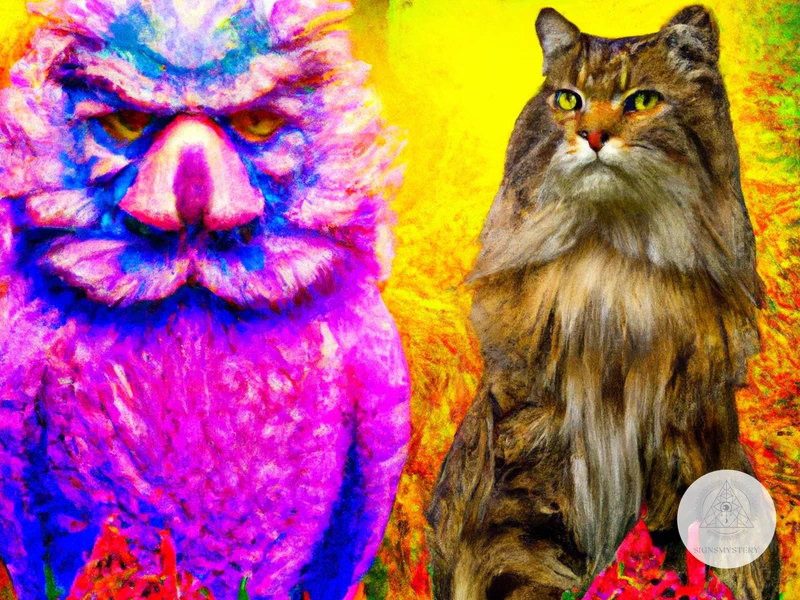
Animals have long captured our imagination and inspired us with their symbolic meanings. When it comes to common animals, some stand out for their profound symbolism. The majestic eagle, with its association to spirituality and freedom, serves as a reminder of our own divine connection and the importance of soaring above adversity. The wolf, known for its loyalty and intuition, teaches us the value of trust and the power of instinct in navigating life’s challenges. The wise and mysterious owl symbolizes wisdom and intuition, reminding us to listen to our inner voice and trust our inner knowing. The delicate butterfly, a symbol of transformation and renewal, encourages us to embrace change and embrace the beauty of personal growth. Lastly, the mighty elephant, a symbol of strength and perseverance, teaches us the value of resilience and reminds us that we can overcome any obstacle. Exploring the symbolism of these common animals allows us to tap into their wisdom and apply their teachings to our own lives.
1. Eagle — Spirituality and Freedom
The majestic eagle symbolizes spirituality and freedom, capturing the imaginations of cultures and individuals around the world. Revered for its ability to soar to great heights, the eagle represents a connection to the divine and the vast expanses of the spiritual realm. Its keen eyesight and ability to navigate the skies effortlessly inspire us to seek clarity and a higher perspective in our own lives. In Native American spirituality, the eagle is considered a messenger between humans and the spirits, carrying prayers and intentions to the heavens. Its regal presence and graceful flight serve as a reminder to embrace our own spiritual journey and remain open to the guidance and wisdom that surrounds us. Additionally, the eagle’s association with freedom stems from its ability to roam the skies with unbounded independence. Its wingspan evokes a sense of liberation, inspiring us to break free from limitations and soar to new heights in our personal and spiritual growth. The eagle’s symbolism invites us to tap into our inner strength, trust our instincts, and embrace the freedom that comes with aligning ourselves with our truest selves. By embracing the qualities embodied by the eagle, we can cultivate a sense of spiritual connection and live a life that is authentic and free.
2. Wolf — Loyalty and Intuition
The wolf is a majestic and intriguing creature that symbolizes loyalty and intuition. Known for their tight-knit packs, wolves are highly social animals that prioritize the well-being of their group above all else. This unwavering loyalty is reflected in their symbolic meaning, reminding us of the importance of staying true to our commitments and supporting those we hold dear. The wolf also possesses a remarkable sense of intuition, relying on keen instincts and sharp senses to navigate through their environment. As a symbol, the wolf encourages us to tap into our own intuition, to trust our gut feelings, and to follow our instincts. It serves as a reminder that sometimes, the answers we seek are not always found through logical analysis but by listening to the wisdom within ourselves. By connecting with the symbolism of the wolf, we can learn to be loyal to ourselves and others, while also embracing and honing our intuitive abilities for a more fulfilling and meaningful life.
3. Owl — Wisdom and Intuition
Owls, long revered as symbols of wisdom and intuition, have captivated human imagination for centuries. These mysterious nocturnal birds are associated with the ability to see through darkness and perceive hidden truths. Their keen senses and silent flight have made them a powerful emblem of wisdom in various cultures and spiritual traditions. The owl’s large, round eyes, often depicted as piercing and all-knowing, symbolize keen observation and the ability to discern what is hidden beneath the surface. In many Native American belief systems, the owl is considered a messenger of wisdom, carrying sacred knowledge from the spiritual realm to the earthly plane. The owl’s hooting, often heard during the night, is believed to be a call for those seeking to tap into their intuition and explore the depths of their inner wisdom. The owl’s ability to turn its head almost fully around represents the capacity to perceive situations from different angles and gain a comprehensive understanding. This symbolism of the owl serves as a reminder for us to trust our intuition, rely on our inner wisdom, and uncover hidden truths in our lives. By embracing the wisdom and intuition embodied by the owl, we can navigate the complexities of life with clarity and make decisions that align with our higher purpose.
4. Butterfly — Transformation and Renewal
The butterfly holds a profound symbolic meaning, representing transformation and renewal. This delicate creature undergoes a remarkable metamorphosis, transitioning from a humble caterpillar to a beautiful butterfly. The stages of its life cycle reflect the transformative journey that individuals can experience. The caterpillar’s humble beginnings symbolize our own periods of growth and development, where we gather knowledge and experience. As the caterpillar enters the chrysalis stage, it undergoes a profound transformation, dissolving into a formless substance before emerging as a magnificent butterfly. This process teaches us the importance of embracing change and letting go of old patterns or beliefs that no longer serve us. The butterfly’s ability to gracefully navigate the world, fluttering from flower to flower, reminds us to embrace the beauty of life and find joy in the simplest pleasures. Additionally, the butterfly’s brief lifespan encourages us to seize the present moment and appreciate the transient nature of existence. By understanding the symbolism of the butterfly, we are reminded of our own capacity for growth, change, and renewal, inspiring us to embrace life’s transformative journey and emerge as our most authentic and vibrant selves.
5. Elephant — Strength and Perseverance
The elephant, with its sheer size and majestic presence, represents strength and perseverance in the realm of animal symbolism. This magnificent creature has captivated human fascination for centuries with its gentle demeanor and unwavering determination. The symbolic qualities associated with elephants inspire us to cultivate resilience and push forward in the face of challenges, just as elephants demonstrate their immense strength as they navigate through their natural habitats.
The strength of an elephant is not simply physical; it also encompasses emotional and mental fortitude. These gentle giants display a deep sense of empathy and social bonding within their herds, emphasizing the importance of nurturing relationships and community support. The elephant’s ability to overcome obstacles and protect its family group teaches us the power of unity and the value of standing together during difficult times.
Perseverance is another key attribute embodied by the elephant. These magnificent creatures can travel great distances, trudge through dense forests, and endure harsh conditions with unyielding determination. In our own lives, the elephant’s symbolism encourages us to stay focused on our goals and navigate through adversity with unwavering resolve. Whether it’s overcoming personal struggles or pursuing long-term aspirations, the elephant reminds us to stay steadfast and never give up.
In many cultures, the elephant is revered as a symbol of luck, wisdom, and spiritual strength. In Hinduism, the elephant-headed deity Ganesha is revered as the remover of obstacles and the god of wisdom. This association highlights the elephant’s symbolism as a source of wisdom and guidance. By embracing the elephant’s teachings, we can tap into our own inner strength and wisdom, finding the resilience to overcome challenges and navigate the twists and turns of life’s journey.
The symbolism of the elephant as a representation of strength and perseverance serves as a powerful reminder of our own capacity to endure and thrive in the face of adversity. Through the example of these magnificent creatures, we are inspired to cultivate resilience, nurture our relationships, and tap into our inner wisdom, ultimately embodying the qualities of the mighty elephant in our own lives.
Lesser-Known Animals and their Symbolism
While some animals like eagles and wolves have gained mainstream recognition for their symbolic meanings, there are also lesser-known creatures that carry profound symbolism. The dragonfly, for instance, symbolizes change and adaptability with its ability to swiftly navigate between air and water. Foxes, known for their cunning and camouflage, represent intelligence and quick thinking. Dolphins, often associated with compassion and joy, remind us of the importance of emotional connection and playfulness. The peacock, with its stunning display of feathers, symbolizes beauty, confidence, and self-expression. Bees, known for their diligent teamwork and harmonious community, embody the values of collaboration and interconnectedness. By exploring the symbolism of these lesser-known animals and their unique characteristics, we can gain deeper insights into the intricate tapestry of nature’s teachings and incorporate their wisdom into our own lives.
1. Dragonfly — Change and Adaptability
The dragonfly serves as a powerful symbol of change and adaptability. Its life cycle is a testament to transformation, as it begins as a water-dwelling nymph before emerging as a graceful and ethereal creature. The dragonfly’s ability to undergo such a profound metamorphosis represents the potential for personal growth and evolution. This symbolism of change extends beyond physical transformations, reminding us to embrace the winds of change in our own lives and navigate through them with grace and resilience. The dragonfly’s adaptability is also noteworthy, as it effortlessly moves through different environments, from the water to the air. This ability to adapt serves as a valuable lesson, encouraging us to be open to new experiences, perspectives, and challenges. Just as the dragonfly effortlessly navigates its surroundings, we too are urged to embrace change, adapt to different situations, and find our own strength and resilience in the face of adversity.
Subscribe to Our Newsletter
Sign up to receive the latest news and updates.
2. Fox — Cunning and Camouflage
The fox is a fascinating creature that has long been associated with cunning and camouflage. Renowned for its ability to blend seamlessly into its surroundings, the fox teaches us valuable lessons about adaptability and the power of perception. With its quick thinking and strategizing, the fox represents the importance of wit and cunning in navigating life’s challenges. Just like the fox, we are encouraged to tap into our resourcefulness and find creative solutions to overcome obstacles. The fox’s ability to camouflage itself perfectly showcases the importance of blending in or going unnoticed when the situation calls for it. This symbolism reminds us to be cautious and discerning, understanding when to reveal our true selves and when to blend into the background. The fox also teaches us to trust our instincts and rely on our keen senses when making important decisions. By observing the fox’s behavior and adaptations, we are reminded to embrace our own uniqueness and find ways to adapt and thrive in various environments.
3. Dolphin — Compassion and Joy
The dolphin, with its playful nature and graceful movements, is widely recognized as a symbol of compassion and joy. Dolphins are known to be highly social creatures, living together in pods and demonstrating a deep sense of empathy towards one another. Their ability to communicate and cooperate within their community exemplifies the power of compassion and the importance of strong relationships. The joyful nature of dolphins can be seen in their playful behaviors, as they leap out of the water and swim alongside boats, seemingly reveling in the freedom of their ocean habitat. The dolphin’s presence in our lives serves as a reminder to embrace compassion in our interactions with others and to find joy in the simple pleasures. It teaches us the value of joyful connections and the transformative impact that compassion can have on both ourselves and those around us. Just as the dolphin rides the waves with grace and exuberance, we too can navigate through life with compassion and find joy in the connections we make along the way.
4. Peacock — Beauty and Confidence
The majestic peacock, with its vibrant plumage and graceful demeanor, is a symbol of beauty and confidence. Renowned for its captivating display of colorful feathers, the peacock effortlessly captivates the eye, reflecting the splendor and allure of the natural world. The peacock teaches us the importance of embracing our unique beauty and embracing self-confidence. Just as the peacock proudly displays its feathers, we are reminded to embrace our own inner radiance and express ourselves authentically. The symbolism of the peacock also serves as a reminder that true beauty stems from within, and it is our confidence in ourselves that truly shines. By embodying the qualities of the peacock, we are encouraged to cultivate a sense of pride in who we are and project our inner beauty outwardly. The peacock’s symbolism challenges us to recognize our inherent worth, celebrate our individuality, and shine with confidence and grace in all aspects of our lives.
5. Bee — Community and Harmony
The bee is a remarkable creature that symbolizes community and harmony. In the natural world, bees work together in highly organized colonies, each bee playing a specific role to ensure the survival and prosperity of the hive. This cooperative nature of bees serves as a powerful reminder of the importance of unity and collaboration in our own lives. The bee’s diligent work ethic and commitment to its community teach us the value of contributing to a greater cause and finding harmony in working together towards a common goal.
In addition to their role in pollination and ecological balance, bees also represent the harmony that can be achieved when individuals come together. Each bee has a specific role, whether it’s collecting nectar, building and maintaining the hive, or protecting the queen. This division of labor exemplifies how a diverse group of individuals can work in sync to create something greater than themselves.
The bee’s symbolism of community extends beyond its own species. It serves as a reminder to us to foster a sense of unity and cooperation within our human communities. By coming together, supporting one another, and valuing the contribution of each individual, we can create a harmonious society that thrives.
Embracing the symbolism of the bee encourages us to nurture relationships, communicate effectively, and work towards common goals. Just as bees rely on one another for survival, we, too, are interconnected and dependent on the support and cooperation of those around us. The bee teaches us the importance of valuing community, finding balance, and working together harmoniously to create a better world.
The Spiritual Teachings of Animals
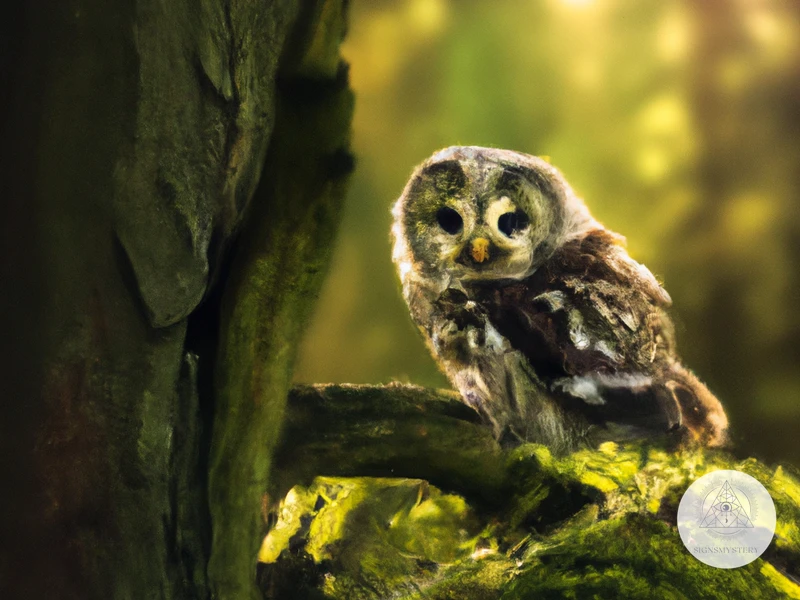
Animals, with their innate wisdom and instinctual behavior, have much to teach us about spirituality and our place in the natural world. Their presence and symbolism offer profound spiritual teachings that can guide us on our own paths of self-discovery and growth. Through observing animals, we can learn about the importance of connection with nature, reminding us to honor and respect the Earth and all its creatures. Animals also teach us about trusting our intuition, as they rely on their instincts and senses to navigate their surroundings. Embracing change is another valuable lesson we can learn from animals, as they adapt to their environments with resilience and grace. Animals demonstrate the power of nurturing relationships, whether it’s the strong bond between a pack of wolves or the cooperative behavior of a bee colony. Lastly, animals encourage us to celebrate our individuality, as each creature has its unique strengths and qualities. By embracing the spiritual teachings of animals, we can deepen our understanding of ourselves, our connection to the natural world, and our journey towards spiritual growth and enlightenment.
1. Connection with Nature
Our connection with nature is a fundamental aspect of our existence. Animals, with their innate connection to the natural world, serve as powerful reminders of this deep bond. They effortlessly navigate their environments, tuned in to the rhythms and cycles of nature. Observing and understanding their behaviors can help us cultivate a deeper sense of connection with our surroundings. Animals also inspire us to appreciate the beauty and diversity of the natural world. From the graceful flight of a bird to the intricate patterns on a butterfly’s wings, they remind us of the intricate wonders that surround us every day. This connection with nature can bring us feelings of peace, harmony, and a sense of belonging. It can also serve as a reminder of our responsibility to protect and preserve the natural world. Embracing this connection allows us to tap into the wisdom and teachings that nature and its animals provide, helping us to understand ourselves and our place in the larger tapestry of life. So, let us embrace our connection with nature and learn from the animals that share this planet with us. Their presence and teachings have the power to awaken our senses, expand our consciousness, and deepen our connection with the natural world around us.
2. Trusting Intuition
Trusting intuition is a powerful lesson that animals teach us through their symbolic representations. Animals have a heightened sense of instinct and intuition, relying on their innate abilities to navigate their surroundings and make decisions. By observing the behavior of animals like the wolf or the fox, we can learn to trust our own gut feelings and inner wisdom. The wolf, known for its loyalty and intuition, teaches us the importance of listening to our instincts and following our inner guidance. Similarly, the fox, with its cunning and camouflage, reminds us to trust our intuition even in uncertain situations. These animals show us that by tuning into our intuition, we can make choices that align with our true selves, leading to greater clarity, purpose, and fulfillment. Trusting our intuition may not always be easy, as the rational mind often seeks concrete evidence or logical explanations. However, the animals remind us that there is wisdom in embracing the intuitive knowing that arises from within us. By honoring and trusting our intuition, we can experience a deeper connection to ourselves, others, and the world around us, ultimately leading to a more authentic and fulfilling life.
3. Embracing Change
Embracing change is one of the profound spiritual teachings that animals offer us. In nature, animals embody adaptability and resilience, teaching us the importance of embracing change in our lives. One example is the butterfly, symbolizing transformation and renewal. The butterfly undergoes a metamorphosis, starting as a humble caterpillar and emerging as a beautiful butterfly. This teaches us that change is not something to be feared, but rather a necessary and transformative process. Another animal that teaches us about embracing change is the dragonfly. The dragonfly spends the majority of its life underwater as a nymph before emerging as a graceful flyer. This symbolizes the ability to adapt and transform in the face of challenges. Animals remind us that change is inevitable and that it is through embracing and navigating change that we can grow and evolve as individuals. Whether it’s the constant movement of schools of fish or the ever-changing seasons observed by migratory birds, animals exemplify the resilience and wisdom inherent in embracing change. By embracing change, we can tap into our own inner strength and embrace the transformative power that change brings.
4. Nurturing Relationships
The symbolism of animals extends beyond their physical characteristics and behaviors, encompassing profound teachings about relationships and connections. When we delve into the symbolism of nurturing relationships through animals, we encounter creatures that exemplify the importance of care, compassion, and support in our interactions with others. One such creature is the dolphin, known for its playful nature and strong social bonds. Dolphins, as a symbol of compassion and joy, remind us to cultivate meaningful relationships and foster a sense of community. They teach us the value of cooperation and the power of empathy in our interactions with loved ones, friends, and even strangers. Just as dolphins rely on each other for protection and survival, we too thrive when we nurture our relationships and build a network of support. Embracing the lessons of nurturing relationships as symbolized by the dolphin allows us to foster deeper connections, create harmonious environments, and experience the profound joy that comes from uplifting and being uplifted by others. By incorporating these teachings into our lives, we can enhance our relationships and create a more compassionate and interconnected world.
5. Celebrating Individuality
In the realm of animal symbolism, there exists a profound teaching centered around celebrating individuality. Each and every creature in the animal kingdom has its unique set of characteristics, behavior, and traits that make them distinct from one another. Just as animals embrace their individuality without seeking validation from others, this symbolism encourages us to do the same. It reminds us that we are all unique beings, possessing our own strengths, talents, and perspectives. By celebrating our individuality, we honor our true selves and allow our authentic essence to shine brightly. This teaching encourages us to embrace our quirks, talents, and passions, rather than trying to conform to societal expectations. Just as a peacock proudly displays its vibrant feathers, we too can confidently express our true colors and embrace our individuality in all its glory. By celebrating our individuality, we not only cultivate self-acceptance and self-love but also inspire others to embrace their uniqueness as well. So let us take a cue from the animal kingdom and celebrate the beauty of individuality that resides within each of us. Embrace your inner peacock and let your true colors fly.
Conclusion
The symbolism of animals in nature and their spiritual teachings is a captivating realm that offers profound insights into our own lives and the world around us. Through ancient cultural beliefs, Native American spirituality, and the concept of animal guides and totems, we have explored the significance of animal symbolism and how it has shaped different cultures throughout history. Interpreting animal symbolism involves examining their traits and characteristics, understanding universal symbolic meanings, and embracing personal interpretations. From well-known animals like the eagle, wolf, owl, butterfly, and elephant to lesser-known creatures like the dragonfly, fox, dolphin, peacock, and bee, each animal carries its own symbolic message and life lessons. By connecting with nature, trusting our intuition, embracing change, nurturing relationships, and celebrating individuality, we can tap into the spiritual teachings of animals and enhance our own personal growth journeys. Through the spiritual teachings of animals, we are reminded of the interconnectedness of all things and the wisdom that can be gained from the natural world. As we continue to explore the depths of animal symbolism, let us open our hearts and minds to the lessons and guidance they offer, allowing us to lead more purposeful, connected, and fulfilling lives.
Frequently Asked Questions
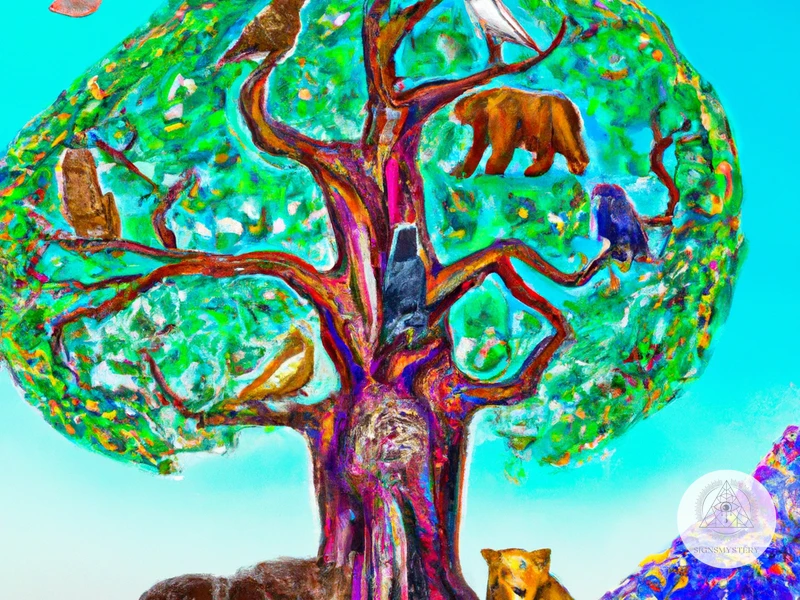
1. What is the origin of animal symbolism?
Animal symbolism can be traced back to ancient civilizations and cultural beliefs across the world. It has been an integral part of human spirituality for thousands of years.
2. Are animal symbols the same in every culture?
No, animal symbols can vary across different cultures and regions. While some animals may have consistent symbolic meanings, interpretations can differ based on cultural beliefs and traditions.
3. How do animals become spiritual guides or totems?
In many spiritual practices, animals can be chosen as personal guides or totems through meditative practices or dreams. Individuals may form a deep connection with a particular animal and draw strength and guidance from its symbolism.
4. Can animal symbolism change over time?
Absolutely. Just as cultures evolve, so can the symbolic meanings associated with animals. As societies change, the significance of certain animals may shift or new interpretations may emerge.
5. Is there a universal meaning behind animal traits and characteristics?
While some animal traits can carry universal symbolic meanings, it’s important to consider cultural and personal interpretations. Animals can often symbolize various characteristics and qualities depending on the context.
6. Can I have multiple animal guides or totems?
Yes, it is possible to connect with multiple animal guides or totems. Different animals may appear in your life during different stages and offer their unique teachings and support.
7. How can I interpret the personal meaning of an animal in my life?
Interpreting the personal meaning of an animal in your life requires introspection and reflection. Consider the recurring presence of the animal, your experiences with it, and the qualities it represents to gain insight into its personal symbolism for you.
8. Do animals have symbolic meanings in dreams?
Yes, animals in dreams can hold profound symbolism. Pay attention to your emotions and experiences within the dream and explore the possible interpretations of the animal’s presence based on its symbolic meaning.
9. Can animals have different symbolic meanings in different mythologies?
Absolutely. Animals often have different symbolic meanings across various mythologies and belief systems. For example, the lion may represent courage and power in one culture, while in another, it may symbolize royalty and authority.
10. How can understanding animal symbolism enhance our spiritual growth?
By understanding animal symbolism, we can gain a deeper connection to nature, uncover personal insights, and tap into the wisdom that animals offer through their unique qualities and teachings. It can be a powerful tool for self-reflection and spiritual growth.
References
- Symbolism of Animals in Buddhism
- 19 Animals in the Bible and What They Symbolize – UniGuide
- 18.3 Symbolism and Meaning of Animals – Introduction to …
Frequently Asked Questions

1. What is the significance of animal symbolism in different cultures?
Animal symbolism holds deep cultural significance across various societies worldwide. Animals are often seen as sacred and represent specific qualities or traits that hold spiritual teachings and lessons.
2. How is animal symbolism intertwined with Native American spirituality?
In Native American spirituality, animals are revered as powerful teachers and guides. They believe that each animal has its own unique spiritual medicine and can offer guidance and wisdom to individuals.
3. What are animal guides and totems?
Animal guides and totems are spiritual beings or energies that represent specific animals and their symbolic meanings. They are believed to provide guidance, protection, and wisdom to individuals on their spiritual journey.
4. How can we interpret animal symbolism based on their traits and characteristics?
By observing an animal’s natural behaviors, instincts, and physical attributes, we can interpret their symbolism. For example, a lion symbolizes courage and leadership due to its majestic and dominant nature.
5. Are there universal symbolic meanings attached to certain animals?
Yes, certain animals carry universal symbolic meanings across cultures. For example, the eagle often represents spirituality and freedom, while the owl is commonly associated with wisdom and intuition.
6. Can personal interpretations of animal symbolism vary?
Yes, personal interpretations of animal symbolism can vary based on an individual’s unique experiences, beliefs, and cultural backgrounds. It’s important to trust your intuition when deciphering the spiritual teachings that animals convey.
7. What does the butterfly symbolize in nature and spirituality?
The butterfly represents transformation and renewal both in nature and spirituality. It signifies personal growth, change, and embracing the beauty that comes from undergoing life’s transitions.
8. How is the symbolism of the dragonfly related to change and adaptability?
The dragonfly symbolizes change and adaptability due to its ability to gracefully navigate through different environments. It reminds us to embrace change with flexibility and to embrace the opportunities that come with it.
9. What spiritual teachings can we learn from animals about nurturing relationships?
Animals teach us the importance of nurturing relationships by showcasing their loyalty, love, and care towards their offspring and members of their community. They remind us to cherish and foster meaningful connections with others.
10. What does the celebration of individuality mean in the context of animal symbolism?
Animal symbolism teaches us to celebrate and embrace our unique qualities, just as animals display their distinct physical characteristics and behaviors. It encourages us to embrace our individuality and express ourselves authentically.
References
- Animal Meanings | Spirit Animal Symbolism
- Animal Symbology | Animal Spirit Guides | Shamanism – Wicca

